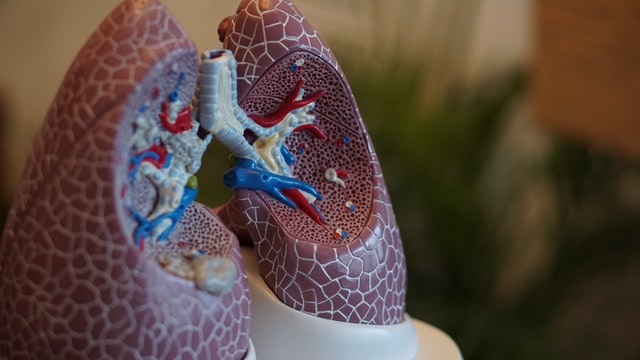You’ve been waiting for this moment for a long time, and it finally comes. Now is your opportunity to apply for nursing school and take the initial steps toward a career in your chosen field! However, applying to nursing school isn’t as easy as you expect. You’ll have to take the TEAS first. This article will show you all you need to know about the TEAS 6 Math section and provide you with the TEAS Math Study Guide. For practice questions, visit our homepage to take the free and full TEAS practice test pack with more than 500 questions for all TEAS subtests.
ATI TEAS 6 Math Review

The ATI TEAS, as you may know, is an entrance exam meant to assess nursing school candidates’ knowledge before they are accepted into their chosen program. The TEAS is always developing and changing its contents to better meet the nursing curriculum as it changes to match various medical developments and expectations for entering nurses, thanks to the ever-changing nature of the nursing field, as well as the medical field as a whole.
The TEAS 6 is divided into four sections: English and Language Usage, Reading, Science, and Math. This blog will provide you with information about the TEAS Math review.
Math and science have long been inextricably linked. In fact, it’s unusual to use science without using mathematical principles in some way. As a nurse, you will be required to use mathematics on a regular basis as part of your job. You’ll need to know how many thumps per second are a healthy, stable amount while taking pulses or listening to heartbeats. You’ll really have to know exactly how much to give or take while giving vaccinations or drawing blood. You’ll need to take your blood pressure and determine which values are unusually high or low. Math will be all around you, and it will be up to you to work with and record all sorts of numbers and units to the best of your abilities in order to benefit patients and support doctors in providing the best possible care.
This TEAS test math study guide is intended to help you learn everything you need to know about the new TEAS 6 Math subtest as well as offer you a free TEAS Math Practice test pack. Not only will you discover how the new Math subtest differs from the old, but you’ll also learn about its concepts and formatting, as well as how to prepare for and approach featured problems.
What is on TEAS Math Section?
The fields of arithmetic and algebra account for 72 percent of the 32 total scored questions on the ATI TEAS math test. The remaining 28% is devoted to data and measurement skills. There are also four questions that are not scored and can come from any category. Some questions need you to answer a numerically presented math issue, while others require you to solve a “word problem.” The word problems provide a “real-world” issue for which you must discover a solution using arithmetic.
Our study guide has been divided into the four main topics of math covered on the test including Arithmetic; Fractions; Order of Operations; and Measurement. There is a brief overview of the key math procedures and concepts that you must be familiar with under each topic. You should seek more practice in areas where you are having difficulty, such as those found in workbooks or on Internet practice sites. You may get a lot of TEAS math study guide free if you search for the mathematical term. To be better prepared for your TEAS test, you can practice all TEAS math questions in all sections with our TEAS Math Practice Test.
Read more >> TEAS English study guide
What changes are in the new TEAS Math Section?
It’s easy to discover that the TEAS 6 Math section hasn’t changed much. The new Math subtest is a little longer than the TEAS 5 version, with 36 questions instead of 34. Four question items will be unscored and will only be used as a survey for future exam releases. Due to the increased number of questions, you will have a little extra time to complete the test—approximately 54 minutes, rather than the previous standard of 51 minutes.
The question categories have been slimmed down a little. The test questions will now fall into one of two categories: measurement and data or numbers and algebra.
Don’t be fooled by the fact that the Math part is now shorter than it used to be! You should still put out sufficient effort in studying for this part in order to achieve the highest possible score. We’ll go through each knowledge category to help you understand how to study and approach each question. Continue reading to discover more about TEAS exam preparation.
Measurement and Data
With only nine questions, the Measurement and Data category is the shortest of the two. It is, nevertheless, rather complicated because it deals with quantitative data in numerous formats. You’ll be expected to perform tasks like converting metrics to standard units of measurement and vice versa; reading graphical data like graphs and tables and analyzing specific pieces of information; solving geometric equations to find specific measurements; describing how a pair of variables interact with one another, and analyzing pieces of graphical information using statistical math.
Brushing up on your math skills will be necessary for adequate preparation for this part. Make sure you’re familiar with both metric and standard units of measurement, as well as the mathematics and other steps involved in changing from one to the other. You’ll also need to know how to detect geometric characteristics and which formulas apply best to which questions, as well as how to correctly evaluate data provided to you in the form of graphs, tables, and other graphical data.
Numbers and Algebra
The Math subtest’s Numbers and Algebra category is significantly longer than its sibling, with an average of 23 questions. As a result, it’s much more difficult to complete, with a greater number of goals to achieve. Some questions will be given as statements, which you will need to convert into equations and other forms of a mathematical expression, as well as from one sort of ratio (such as a % or fraction) to another. Under the Numbers and Algebra question category, word problems will be prevalent, and will generally revolve around topics like ratios, rational numbers, proportions, and percentages.
To answer questions in this category to the best of your skills, you’ll first need to improve your algebra skills and understanding. You might want to review rational numbers and their properties, as well as the many sorts of ratios and how to convert them. Due to the huge number of word problems in this category, a close reading will be extremely necessary. You must pay more attention to the wording of each issue in order to understand what is being requested of you and how to begin the solution process.
TEAS Math Study Guide – How Can I Approach the ATI TEAS Math Section?

The Math section of the ATI TEAS 6 is quite difficult, as our descriptions of each question category demonstrate. As a result, you should test as thoroughly as possible while staying within the time limit. We recommend that you pay close attention to each question in the exam. This will assist you in testing effectively since properly reading the question guarantees you don’t miss any information necessary to complete the problem correctly.
There are a few tips in our ATI TEAS exam study guide of the math section you may use to increase the efficiency of your testing. Make use of the elimination process to find exam answers more rapidly. This is a valuable time-saving tool, especially when you’re confused about how to answer a question. When it comes to determining which response is correct, using approximate statistics can help. You can more quickly find out which option is the best by creating a ballpark number for your response. Examine any relevant numbers mentioned in the problem if you’re stumped on which answer may be correct. You should carefully cross out any answer options that seem to be incorrect. If this technique fails to help you, feel free to skip the question and come back to it later. It’s much better to move on to questions you can answer quickly than to ponder ones you don’t know how to answer.
Even if the solution comes to you right away, we want you to demonstrate your work as you answer exam questions. This will make sure that you are following all of the steps and allow you to double-check your math if an answer does not seem to be correct. Furthermore, if you have enough time after completing the Math section, it is a good idea to go over your answers thoroughly in general. Examine your work to ensure you didn’t make any mistakes or skip a step in the solution process. To ensure you didn’t make a mistake, compare your final answer to the question and the work you’ve scratched out. Make sure you’ve also bubbled in all of your answers.
We hope that this TEAS Math study guide and our recommendations will be of use to you as you take this crucial test and begin this new period of your life. We try to provide test takers with only the best and most complete materials for their test-taking needs on our website. Being how important this exam is to your future, we’ve created an ATI TEAS Math study guide and ATI TEAS 6 Math practice test. We want to make sure you have access to every conceivable resource so you may study as extensively as possible and achieve the highest possible score. Now it’s time for practicing with our free TEAS Practice Test. Or you can read the TEAS test study guide free pack for other TEAS sections to get 100% ready for all the tests. Let’s start!




